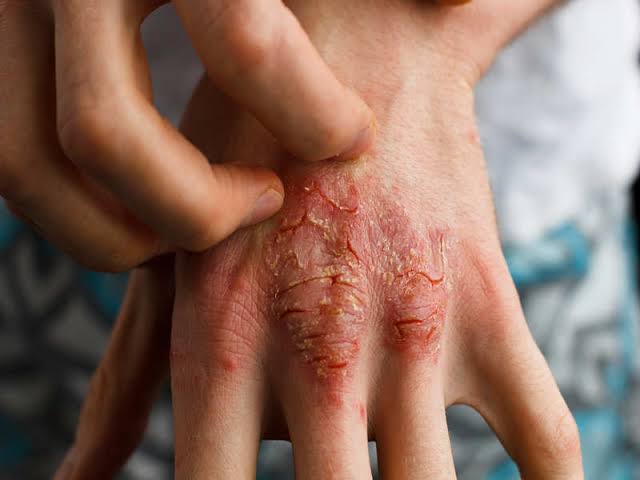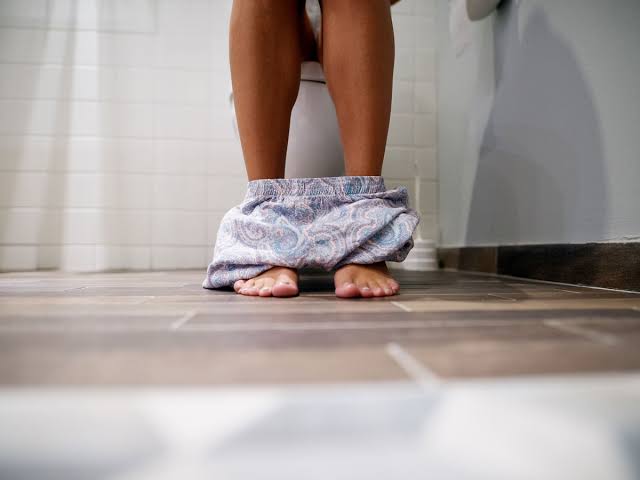ALL YOU NEED TO KNOW ABOUT PSORIASIS
What is psoriasis, symptoms of psoriasis, treatment of psoriasis, and the use of ozonated oil to treat psoriasis.
What is Psoriasis?
Psoriasis is a general skin disease in which the life cycle of cells speeds up. Generally, in healthy skin, the life cycle of a cell is 28 to 30 days. However, with skin in psoriasis, the cell matures in 3 to 5 days. This condition brings up the cells on the surface of the skin. These excess cell layers create red patches and scales on the skin which creates itchiness and irritation. The treatment focuses on reducing the speed of growth of cells.
Psoriasis can sometimes last for a longer time, thereby damaging the immune system. Owing to the red patches it leaves on the skin, it is named an autoimmune disease. One can identify such patches on skin with their redness, scaliness, and itchiness. Dark complexion people may have purple patches. The severity of Psoriasis can be examined with its exposure on the body from small to large patches. Psoriasis can also take place due to injuries, which is called the Koebner phenomenon.
Usually, psoriasis grows gradually, but in some cases, the growth can be rapid. The initial symptoms can also cause skin infections and mental stress. Controlled exposure to the sun can reduce scaling in people with mild to moderate psoriasis as it kills the overactive white blood cells that attack the healthy skin. Psoriasis can also result in inflammation and psoriatic arthritis. Psoriasis does not affect the health of an individual.
Causes and symptoms of psoriasis.
What causes psoriasis?
Mainly two factors cause Psoriasis, namely genetic and the immune systems.
Immune system:
Being an autoimmune situation, it originates from the body system itself. Research says, during this condition, the T cells which are the white blood cells attack the skin cells.
Generally, white blood cells are directed to destroy external bacterias and combat infections. Sometimes this process backfires on skin cells and they start growing at a rapid speed. This also results in the rapid growth of new cells. The existing cells are then pushed upwards to the surface of the skin, creating patches and plaques. These areas get inflamed and red.
Genetics:
There are some cases where people develop Psoriasis, following their genes. Risk of Psoriasis gets higher when it already persist in the blood relations or the immediate family. Though genetic Psoriasis is found less in the number of people. As per the National Psoriasis Foundation, there is only 2 to 3 percent of people who suffer Psoriasis due to genetic reasons.
What are the symptoms of psoriasis?
Some of the most common symptoms of psoriasis are:
1. Red, scaly and thick patches.
2. Little Scaling spots
3. Bleeding cracks in the skin,
4. Inflammation, soreness, and irritation
5. Nails get uneven, ridged and thickened
6. Joints get stiff and rigid
While these symptoms of Psoriasis differ from individual to individual, the aforementioned signs are the common ones.
Types of Psoriasis
Multiple types of Psoriasis are:
1. Plaque Psoriasis: Mostly prevailed form of Psoriasis is plaque psoriasis, which causes dryness, redness, silvery scales and plaques. They also cause pain and itchiness. Your entire body is subjected to their effect including the soft skin tissues.
2. Nail Psoriasis: In this type of Psoriasis, majorly your nails (toe and fingers) start becoming uneven, and get discolored. In such a condition, nails get loose and get separated from their beds. In major issues, nails can start crumbling.
3. Guttate Psoriasis: This type happens between the ages of 8 to 20 years. This starts due to a viral or bacterial infection. It can be differentiated by scaling and water shaped plaques seen on your arms, scalp, legs, and trunk. These plaques are not much thick and get covered with a fine-scale. This type gets treated on its own, or can also get repeated.
4. Inverse Psoriasis: This type of psoriasis majorly attacks armpits, breasts, and skin covering the genitals. In this type of psoriasis, soft patches of red skin are observed along with sweating and friction which creates severe pain. These sorts of infections are usually seen as a result of fungal infections.
5. Pustular Psoriasis: This type of psoriasis is not usually observed, it causes broad patches on little areas like feet, hand, and fingertips. It originates quickly and also shows some pus blisters soon after the skin becomes red and soft. This type of psoriasis can cause fever, diarrhea, and chills.
6. Erythrodermic Psoriasis: This is the extremist form of psoriasis, it leaves red peeling rashes that can cause itching and inflammation.
7. Psoriatic Arthritis: This form of Psoriasis combines the effects of arthritis and psoriasis causing scaly skin along with painful joints.
What is the treatment for psoriasis?
Treatment of Psoriasis includes 3 ways:
1. Topical Treatment Method
2. Light Therapy Method
3. Systematic Medication
Topical Treatment: In this treatment of Psoriasis, different products are applied to the skin in the form of cream, gels and ointments. These methods are used to reduce the effects of Psoriasis. They can either be chemical based or natural based. A natural way to treat psoriasis is by using Ozonated oil. Due to its excellent wound healing and antiseptic properties, Ozonated oil is perfect to use for treating psoriasis as it provides a soothing effect to the affected areas of the skin and speeds up the healing process.
Light Therapy: Also known as phototherapy, this treatment of Psoriasis implies exposure of skin to sunlight, either artificial or natural. This treatment works as the ultraviolet rays reduce the effect of psoriasis. Under this method there are certain kinds as follows:
1. UVB phototherapy: Under this treatment of Psoriasis, an artificial light source provides UVB rays that reduce the effects of Psoriasis.
2. Goeckerman therapy: Under this method, UVB treatment is combined with coal tar treatment that moderates the effects of psoriasis.
3. Excimer Laser: In this treatment of Psoriasis, only the affected part of the skin is exposed to light, which saves healthy skin from getting damaged.
Another way relief can be achieved is by using ozonated oil to treat psoriasis. Due to its excellent wound healing and antiseptic properties, ozonated oil is perfect to use for treating psoriasis as it provides a soothing effect to the affected areas of the skin and quickens up the healing process.
For years Ozonated oil is known for reducing irritation and skin
reddening owing to its cleaning, sterilizing and moisturizing properties.
One can always consider Ozonated oil to treat psoriasis, as the effects and
results of the treatment are remarkable.
For more information or to buy Ozonated Oils, visit www.ozoneoilsco.com.au



